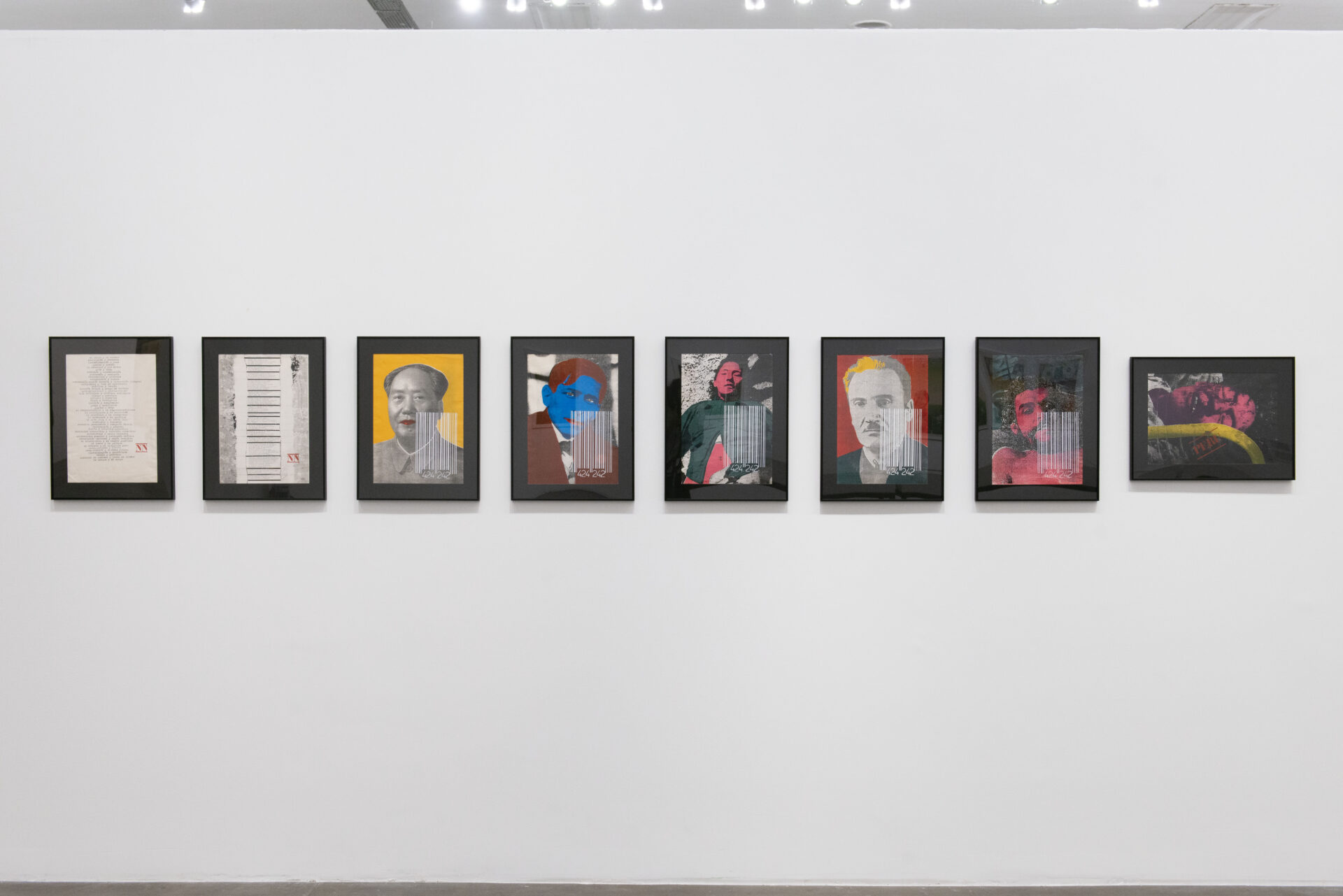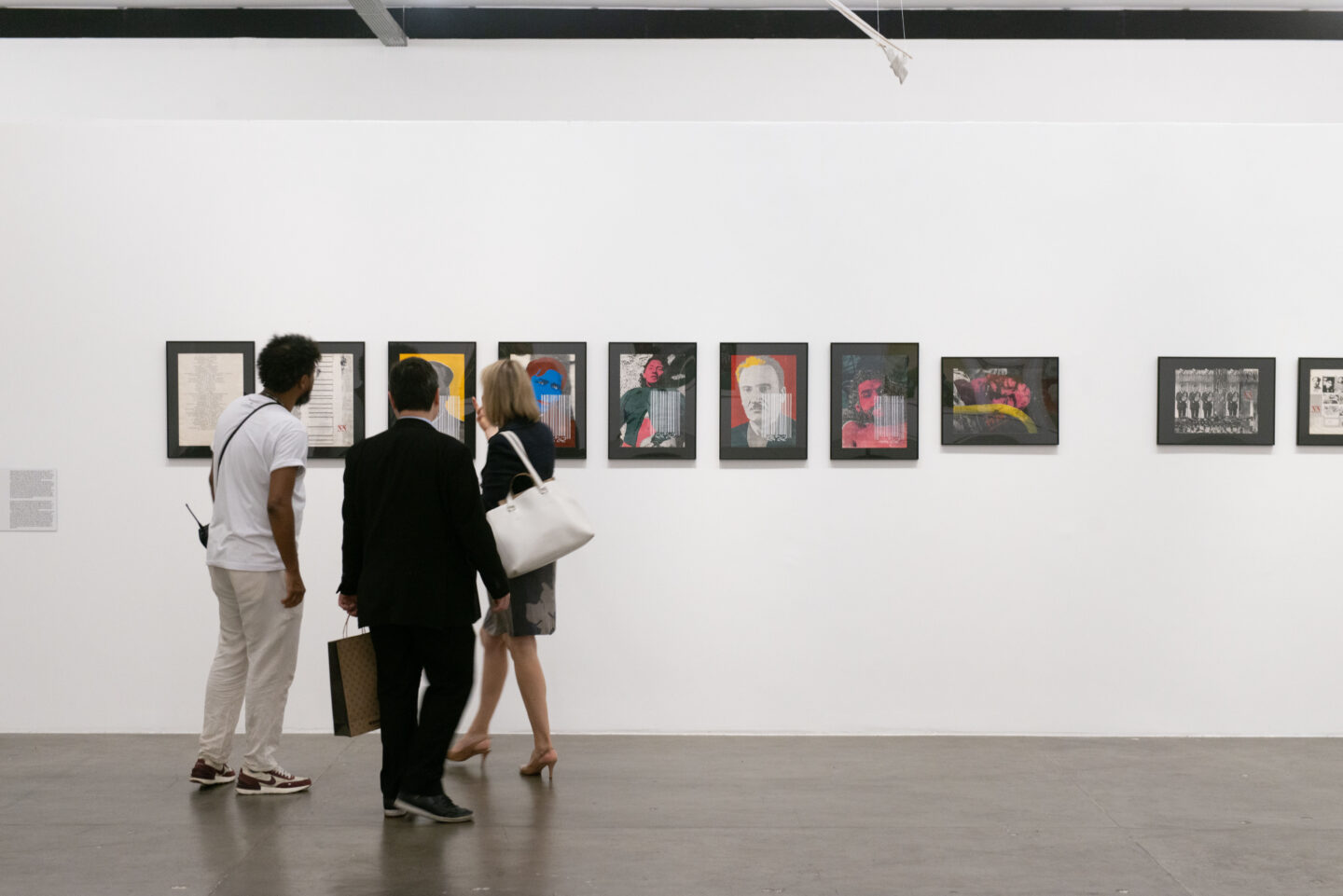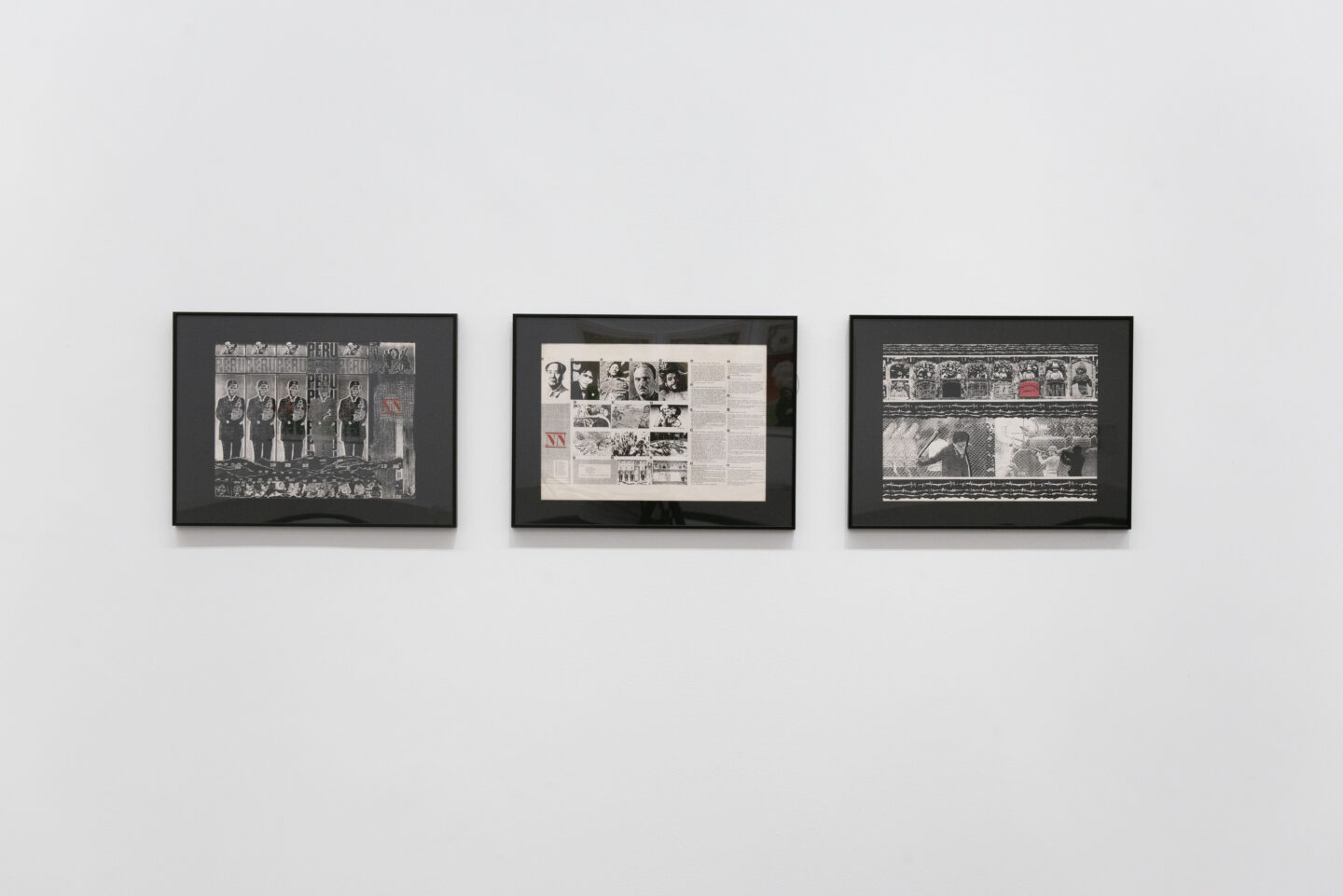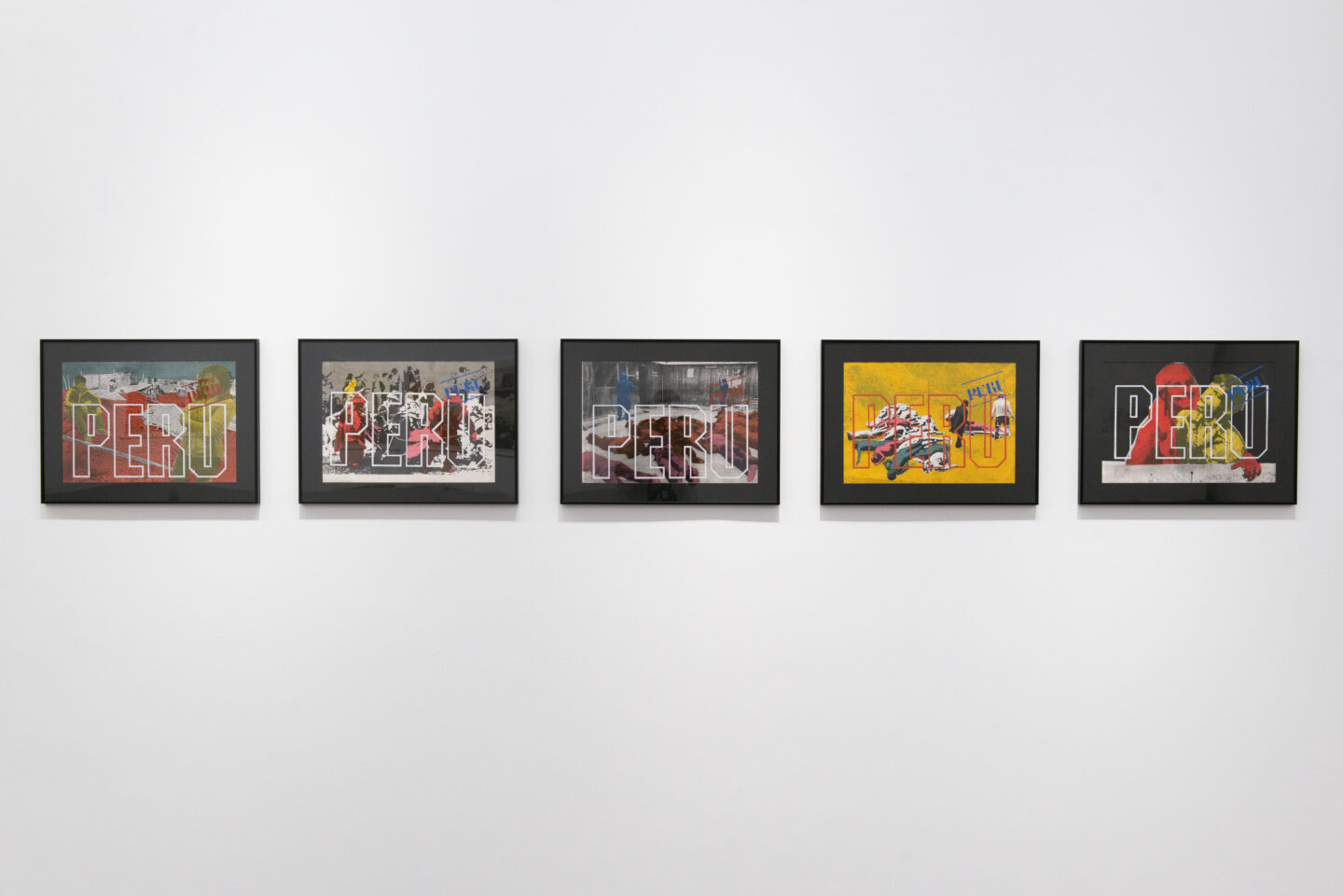
Taller NN
Printed in Lima in 1988, Carpeta negra [Black folder], by art collective Taller NN, was, at the time of its publication, an unbearable visual and textual device for both the official culture and the leftist Peruvian culture. Its pages dared to touch the untouchable, staining with a monstrously seductive chromatic make-up the mythical faces of the revolution in a wide left-wing political spectrum, from Mao Zedong to José Carlos Mariátegui, from José María Arguedas to Edith Lagos or Che Guevara. A barcode was printed on them, showing the enigmatic number 424242 (in reference to the telephone number the population was encouraged to dial in order to make anonymous denunciations of people suspected of terrorism). The image of the student Javier Arrasco Catpo, killed by the civil guard during a protest in 1988, is the hinge to another group of images, showing different massacres – Guragay, El Sexto, Pucayacu, Uchuraccay, and El Frontón – and the word “Peru” is printed on them as a country-brand. Images of mass graves or corpses of journalists in rubbish bags, taken from the anesthetized mass media, are also colored as a way of giving them back the ability to scream. Both series, the faces of the revolution and the anonymous bodies of the massacres, are marked by the capital, which inscribes its signs on them – the barcode, the logo – perhaps as a password to the ancient knot between money and coloniality, which precedes and exceeds the chronology of Carpeta negra.
Carpeta negra creates a mobile device of partial and precarious memory of the years that turned Peru into a deposit of open-air horror, working as a key to the new phase of capital accumulation on a global scale. But in its audacity full of antidogmatic irony, without a state or a party as interlocutor, the Taller NN generated a device capable of constructing an interrelation with time, in every time. What happens when these images look back and get in contact with the previous period of the Agrarian Reform (1969–75)? Or what image does Carpeta negra give back to Peru today, in the revolts that broke out in a decentralized way among the mainly Indigenous and peasant population in December 2022, and which once again show a colonial wound, impossible to suture?
fernanda carvajal
translated from Spanish by ana laura borro
Taller NN (Peru, 1988-1991) was a group that created graphic works in response to the massacres and illegal disappearances in the country, using corrosive and desacralizing approaches to communist iconography and militant slogans. Among its members were Alfredo Márquez (NN a-c-falo), Enrique Wong (NN detuchino), Alex Ángeles (NN acarajo), José Luis García (NN papalucho). Their production was presented in collective exhibitions at spaces such as the Museo Reina Sofía (Madrid, Spain) and the Museo de la Solidaridad Salvador Allende (Santiago, Chile). Their works are part of the collection of the Museo de Arte de Lima (Peru) and the Museo Reina Sofía (Madrid, Spain).
- Vista de obras de Taller NN durante a 35ª Bienal de São Paulo – coreografias do impossível © Levi Fanan / Fundação Bienal de São Paulo
- Vista de obras de Taller NN durante a 35ª Bienal de São Paulo – coreografias do impossível © Levi Fanan / Fundação Bienal de São Paulo
- Vista de obras de Taller NN durante a 35ª Bienal de São Paulo – coreografias do impossível © Levi Fanan / Fundação Bienal de São Paulo

 Português
Português

